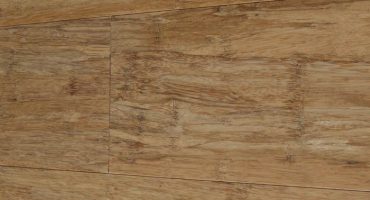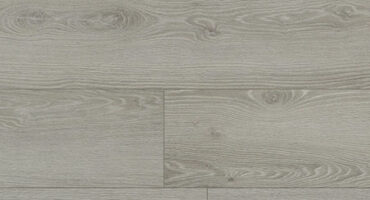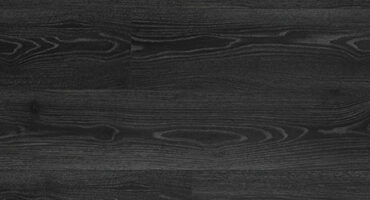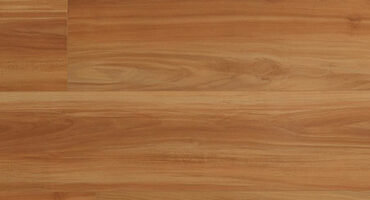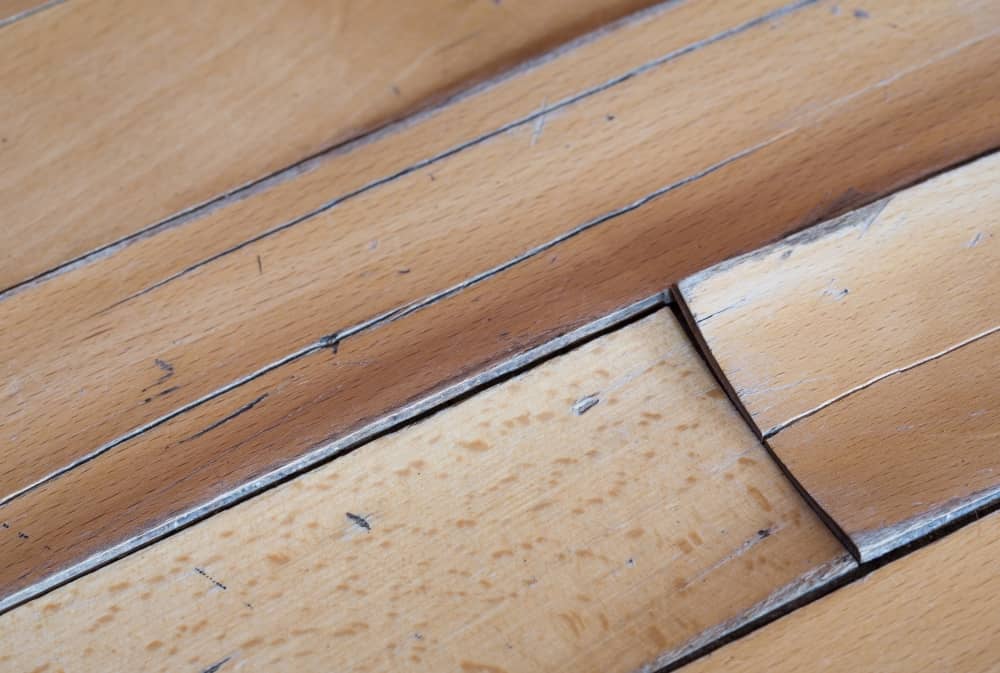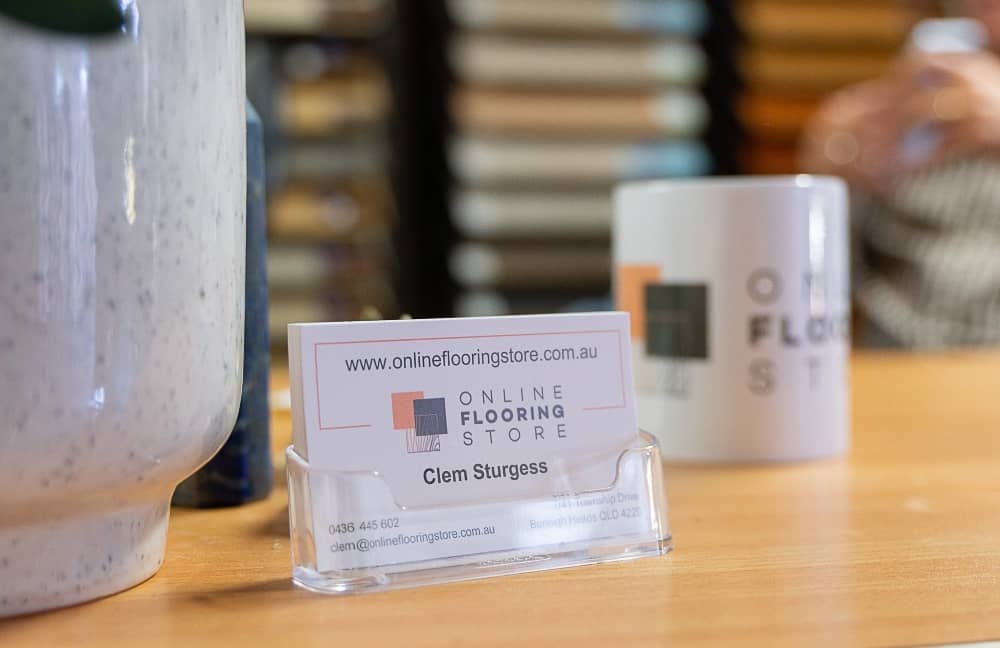I was looking back on what is shaping up to be a long and passionate (20 + years) career in flooring, and it started me thinking: Are there a few readers out there who would benefit from learning more about my own flooring experiences, preferences and opinions? A few others in the team think so. So here it goes.
I decided to break my experience into two areas:
- My experiences with flooring in my own home as a consumer.
- My experiences as a flooring industry representative and the associated successes and failures.
Not all great new ideas are great long-term, making it more important than ever to acquire the right professional advice.
From My Own Experiences as a Homeowner
A Pioneer of Click-together Laminate Flooring
When we first built our house, I was very new to the flooring industry and was quite green within the industry. This was well over 20 years ago, and my flooring tastes were mostly governed by my wife’s preferences. Happy Wife, Happy Life, right?
At the time, she loved the laminate we had seen in several display homes. As this was during the rise of laminate flooring and well before many of the issues of this early version of the category were known, it was what we/she selected for our home.
It came down to two choices:
- The first was an early product by Quickstep, one of the first laminate variants with a locking system (which was to supersede glue-together systems).
- The other product was from a national chain hardware store (you know, the one) and was called Wesfi if memory serves me correctly.
The Quickstep representative at the time was very knowledgeable about Laminate as a category. He educated me on the product and made me a pretty decent offer which was hard to refuse.
I also got very lucky with an installer who talked and walked me through the process as we installed the product in our new home because I still had little knowledge of how to install a floating floor. He also spoke to me about the Wesfi product, which he had laid in the past, and it had many problems. Experiencing first-hand just how easy the Quickstep product was to lay out made me feel confident we had chosen a great product.
The floor itself was very tough and durable. Our mistake was what we did underneath the floor. At the time, floating floor underlays never had a moisture membrane built into the back of them.
It was a new home, and the requirement was to put down a builder’s plastic first. The installer took a moisture reading on the floor and believed there was no need for a plastic membrane, which proved a big mistake. The result was peaking joins around the floor as moisture rose through the slab over time, settling into our new floor’s joins.
We didn’t realise at the time that new concrete slabs release water for ten years or more. Quality saved us! Although the joins on our new floor had peaked within the first six months, there was no other damage on the floor. A lower-quality product may have resembled a series of Wheat-Bix instead of clearly defined floorboards. The floor was easy to clean and live on, with children and pets never showing visible wear and tear. Even as an early laminate, it was incredibly durable and did not expand or contract much.
A Very Different Experience With Bamboo
From there, I went to work for a company called Embelton in their Structure Borne Noise Engineering division. I joined this company to exit the flooring industry, but they also had another division that I was to later end up in. Embelton was at one stage the largest importer of bamboo flooring in Australia. This prompted me to install a bamboo floor in our house. It is also how I ended up back in the Flooring Industry!
First, we had to pull up the quickstep laminate and sell it cheaply to someone (the beauty of a floated floor). Rather than pay to dump the floor, my wife put the old floor on Marketplace, and a young gentleman paid us to take it away. He got the cheap floor he was looking for, and we got rid of our unwanted child, as the bright, shiny new one had come along.
Compared to the laminate, the installation of Bamboo was very different. It was much harder because the product was so dense and rigid, but also harder to damage when installing. After all, it was so strong. It surprised me as both products have the same licensed locking system, but due to the thicker and harder bamboo, it took much more work to engage boards.
The look of the Bamboo was stunning, but we were to find later that it scratched very easily and would sometimes need repairing. We chose a dark colour which always left white scratches! We were forever trying to cover scratches by using WD40 or other oil-based products and rubbing them into the scratched area. Overall, the product stood up well but grew and shrunk a lot.
A big issue was that I broke the installation requirements rules and had the product in much larger rafts than I was technically supposed to. The product grew and shrunk more than laminate, and during humid seasons, the expansion breaks that I left were insufficient. The product would expand hard up against the walls, and this would cause a build-up in pressure in the mass of the floor, and it would lift a little in places. Not much, but you could feel the movement on the floor, and it would make noise and be noticeable underfoot. Again, not a lot, but more than it should have. I do have to stress, though, that this was my fault, as I chose not to follow the rules.
The product also had a semi-gloss finish which looked great just after we had mopped it (by we I mean me,) but in humid temperatures, it would have a haze all over the floor, and there wasn’t much we could do about it.
A Better Experience With Bamboo for Our Neighbours
Sometime after our bamboo flooring experience, we put a different type of bamboo flooring into the neighbour’s house. It was the same product but a much more sensible coffee-coloured version with a hand-scraped finish. Because of this, they had a very different experience from us.
The rustic colour variation of this product gave you a lot more latitude with scratches and dents. Also, with their lighter colour, the natural appearance of the Bamboo shows through (Yes, this is the correct tense, as they still have it.). Their raft size also met supplier guidelines meaning that expanding and contracting did not cause any problems for their floor. We recommend you read this blog post to understand the importance of acclimatisation of flooring.
Water Resistant Laminate: The Game Changer
When I was employed at signature floors in their hard flooring division, We were starting with an Australia-first product of what is known as second-generation water-resistant laminate flooring. This product had a 72-hour water guarantee, and compared to the usual 24-hour surface guarantee the first generation offered, the product looked very promising.
So that said, I installed the product in our home. We again packed up our old Bamboo Floor and put it on the marketplace. This time a young couple with a young child came and bought us flooring for the home that they had just bought. This felt good, as while to us we no longer wanted the product, to them, it was precisely what they were looking for at an incredible price!
The experience with this product has been amazing. Where a bamboo floor might scratch from a chair’s legs and furniture, we have dragged heavy furniture, bookcases and fridges across our laminate, and there are absolutely no signs of passage!
There have been no issues with expansion and contraction whatsoever, as this product is allowed to have a raft size of 20 metres in length and width, Truth be told, I again broke the rules, as from our front door to the end bedroom of the house is just over 22 metres. Even so, there has been no measurable growth in the floor, and no seasonal change is noticeable.
We have had this floor for 8+ years, and I cannot find a good reason to replace it. Since the evolution of this product, there has been a host of others in the category coming in its wake. One such is eclipse aqua guard, which offers a 96-hour fully submerged water warranty and has a much better, easy-to-use joining system. So although you still cannot call these laminates waterproof, you can pretty much consider them that way with what you can subject them to.
Another thing about this kind of laminate is that it looks great! It is usually at the top of a supplier’s range, and having worked on the other side of the industry, suppliers do not put their best colours, pictures and finishes into their cheapest products!
That, plus the additional toughness of a laminate, makes it a hard-to-beat product. As I say, floors are meant to be lived on, which is what we found with this one. We have a pool, a tap-dancing daughter, dogs, and careless friends and family. We can just enjoy our time with them instead of worrying that they are going to destroy our floor!


My Experiences as a Wholesale Flooring Representative
After working in Flooring Retail for several years, I first started in the wholesale side of the industry with Johnson Tiles before moving to the engineering division of Embleton. As someone who inspects flooring complaints, you only really meet the end user if something goes wrong. As they say, no news is good news, so news means bad news.
It was my job when things went wrong to ascertain what went wrong and why.
In my time, greater than 95% of the issues were caused by the following:
- Installer error
- Subfloor is not being prepared properly
- DIY customers and Builders (….especially builders) not paying attention to installation guidelines.
Today, there is very little in the way of product failure that happens simply out of nowhere. Products today are rigorously tested, and much loss happens simply from lack of understanding or lack of preparation in the following areas:
Subfloor Preparation
Most issues that arise in new homes happen when a builder prepares a slab to the ‘Australian Standards’. In their eyes, it is good to go; job done. However, the Australian Standard applies to concrete slabs and differs significantly from those required for flooring products such as Timber, laminate and hybrid.
The consumer often finds themselves in a no man’s land where the builder gives the slab a tick of approval, and the flooring installer says it needs potentially thousands spent on flooring preparation.
“Isn’t it just a slab?” I hear you ask.
Followed by this statement: “Gee, that looks flat.”
A Concrete slab can look flat to the naked eye until you put a straight edge over it. You will often discover it has more dips than a BMX track. It is often interesting to look at a slab and then come back after it has rained. Where pools of water gather after the rain will show you where the slab has low points.
Rigid Flooring Products suspend themselves between high points, creating cavities above low points. Stepping onto these areas causes the product to deflect, which causes stress that is transferred into the joints of the flooring. The deeper the dips, the more pressure and energy are applied to the joins on these boards. Over time this will compromise the joins on a product to fail. However, this is not a product failure but an installation error.
As you can expect, the homeowner usually needs help understanding this. They hear two differing stories about the state of their new concrete slab. One of which costs money to fix, the other costs nothing, and says you are ‘within standard’. So what do you believe? The flooring contractor may be seen as trying to get extra money from the job, and the consumer wants nothing to do with it. After all, it is a brand new build and ‘within standard’. From here, subfloor preparation all too often gets ignored, corners get cut, and products fail. Then when the inevitable happens, everyone points at the supplier and blames the product.
The story’s moral here is that some unforeseen costs are still necessary. Discussing with your builder what is expected when you get to your flooring is far less expensive and problematic than dealing with it at the end of the path. After, the concrete has to do the job anyway, so why not do it right?
Again, this is not a product failure.
Moisture Damage
Cheap laminate and engineered timbers are particularly susceptible to this. If you spill a glass of water on your floor and you can mop it up within 10-15 minutes, you won’t have any issues with your floor. There is a view that (wrongly) exists in the market that if you spill a thimble full of water onto a laminate floor it will explode. This is simply not the case.
What is of concern is:
- Liquids left on the floor for an extended period, say during a storm
- Moisture that you cannot see
For example, when you are in a new home with a new slab, water is released from this slab for ten or more years. For all timbers and laminate floors, there needs to be a vapour shield between the floor and the slab. This allows the water vapour to be dispersed to the outsides of the raft of flooring rather than into the flooring itself.
Builders’ plastic underneath the underlay will save you a lot of heartache. It is important to know that all underlays have a moisture membrane, but the thinner ones that are under 200 microns in thickness are not waterproof. Builders’ plastic is only sometimes necessary with new homes, but we recommend it as a cheap way to ensure no moisture complications with your floor.
Laying builders’ plastic up the wall with around a 100mm overhang from the edges of your flooring is another way to direct moisture away from your floor. It is a process known as Tanking. The floor is installed with this additional plastic around the edge of the floor. When the job is finished, but before skirting or scotia are fitted, this overhand of plastic is cut back at the level of the top of the floor. This ensures that any moisture vapour travels along the path of the plastic and bypasses any exposed edges of your flooring.
Another common form of moisture ingress is environmental, which is typically through the floor acclimatising to the atmosphere. It typically causes the floor to grow, but only sometimes if you live in a particularly dry climate. This is precisely why the raft (or expansion) breaks stated in supplier guidelines are so important. In most cases, rules are in place for a very good reason.
Incorrect raft sizes and lack of expansion breaks mean the floor has the potential to grow to a point where walls can be pushed out, doorway tracks pushed out, kitchen benches moved, and the floor pulled apart. These are extreme cases (and thankfully) that only really occur with Bamboo due to its sheer strength.
In one case, a builder installed a bamboo floor in a building while the occupants were away for six weeks. The house was in Byron Bay, and locked up for the period, essentially turning the unit into an oven. The product grew, and problems arose because the builder needed to allow for more expansion in the floor and had it hard up against benches and walls.
The owners arrived home to a nasty surprise, and I was called out to do the inspection. A draft of hot air greeted me as the elevator door opened and told me everything I needed to know, even before the floor was within my eyesight.
On inspection, the floor had a huge ridge, almost like a BMX jump in the middle of the room, running down the length of the boards. Many of the wall frames had been damaged and pushed back. The builder was very defensive, boasting decades of experience, and I had to be the one to tell him if he had read and adhered to the instructions in the box, then all this damage could have been avoided. Each box had a set of instructions (that he had discarded,) and he need only have read one of them.
Bamboo flooring is solid and can grow a lot: usually 2.5 times (sometimes more) than engineered timber and 5 times more than laminate. In this case, the product was delivered very dry and then entered a hot and humid environment where it grew with no allowance for expansion and no acclimatisation. The builder had to repair walls, doorways, kitchen benchtops, and the floor.
Thin Core Hybrids
Again this is something we have discussed in another blog post where Hybrid products can experience problems when there is not enough weight in their cores. This can result in the product being unable to restrain the growth and shrinkage of the wear layer, which is temperature sensitive, as it is made from Polyurethane PVC. Keep in mind that these wear layers are solid. Every time you go into a supermarket, the chances are that you are walking into one of them.
A wear layer needs a specific amount of weight to balance against this wear layer. Typically, if an SPC product has an mm wear layer, it needs to be at least 6mm in total thickness (if the backing is 1.5mm,) to give it a chance. Many suppliers at the moment are experiencing issues with this, and scratching their heads. 7mm is typically very stable. Remember that Aerated Core Hybrids (PVC Core, WPC, APC, IPC, ETC) are far lighter than an SPC product and must be much thicker to have the same core weight.
Rail Roading in Engineered Timber
This occurs in engineered flooring in block core timbers: Engineered Timber that uses a 3-layer, and not a Ply Core construction.
Small gaps between the blocks in a block wood core give them room to grow, as they run at a 90-degree angle to the top and bottom layers. In areas of extreme humidity, these blocks can grow to the point that they come into contact, and with nowhere else to go as they want to keep growing, push upwards as they meet. Looking down the length of each board, it appeared like mini railway sleepers lay across the width of the floor.
I did see this a lot in Australian species timber with a whiteboard block core, but it was never an issue when they had a ply core. Additionally, it didn’t happen on floors with Oak Veneers. Only ever Australian Species Timbers.
Loose Lay Vinyl Plank
Vinyl Plank was originally sold as a loose-lay product. Although there was extensive product testing before coming into our market, there was limited real-life testing in the Australian environment. As an example, heating a room to 50 Degrees Celsius in a temperature chamber is different to sun coming through a window at 50 degrees Celsius, and the product proved to be susceptible to environmental, climatic change.
Australia has a huge range of fluctuations in climate, equivalent to that of many countries in Europe in a single land mass, and as a result, the whole loose-lay version of Vinyl plank was a flawed concept in our environment.
In my time at Signature Floors, I spent time working with Robert Herten, former joint Owner of the company. From the Outset, He was nervous about about Loose-lay vinyl planks with a perimeter expansion gap.
Vinyl Clicking Systems
Attempting to put a click system on a vinyl product is less than successful to put it. Because the product is temperature-sensitive, it softens with heat, grows and expands, causing the joins to be damaged in its expanded state. It was a failure and very quickly came off the market.
Cheap Laminate
I have seen some cheap products work, but care needs to be taken. Take some hidden gems in this blog, for example. I have to be clear here that cheap laminate products as a category are not the best idea. They may be well made for what they are, but they have no moisture protection, making them highly susceptible to all forms of moisture ingress. Going with a cheap hybrid is a better option to go with.
All this being said, and considering my lifestyle, higher-end laminates are often my pick of the bunch in terms of flooring types. A well-made laminate is sturdier, harder, easier to maintain, and able to withstand wear and tear better than all other product categories.
Floated Timber Floors
I have seen many issues with floated timber floors over the years and would recommend direct sticking to the subfloor if you are looking for a ‘forever floor’. For reference, this blog covers the pros and cons of both. Timber is usually a permanent long-term investment in your home that gives a wow factor and can boost your home’s resale value.
Direct sticking costs more initially and takes more time, but once it is done, you forever have the floor (whether engineered or not), giving you that full solid feel. It also alleviates the need for as many expansion breaks to be cut into the floor, and you will never notice any of the associated noise or ‘bounce’ of a floated floor.
Products That Have Always Been Successful
- SPC Hybrids of 7mm or above rarely cause any issues due to a decent core weight that stabilises the product.
- Micro Veneer-engineered timber products have been another very dependable product. They are just like normal engineered Timber but with a very small veneer which, in this case, becomes an advantage because they do not have enough strength to deform and influence the layers underneath.
I have never once in my years of being a flooring rep ever gotten the call to go look at a stability issue. Just like any engineered floor, there is the possibility of scratches, but they are often very easily repaired with a wax kit or good ‘ol WD40. It is also a great-looking and cost-effective product; once it is on the floor, you cannot tell it is a solid timber floor to look at.
We highly recommend Eclipse Australis Compacto as being a stand-out in this category. It is less expensive and so much more stable. Bigger is not always better.
- Water-resistant Laminates, since coming into the market, have been a game changer. The only issue I have ever had to go and inspect is the installer error rather than the product itself. They are a wonderful, dependable product.

Expert Insights From Clem Sturgess
20+ years' experience in hard flooring
I am not a great fan of sanding and coating any engineered flooring without a good reason. If you are coming from the perfectionist’s point of view, I consider more frequent light sands to be your best option as they do not cut into the veneer of your floor.
In my opinion, reasons for full sand & refinish for me include:
- If you have let your flooring deteriorate due to years of neglect, the coating has deteriorated, and there is undesirable greying to the timber as a result of this.
- Another reason to sand and refinish is that you want to change the look of the floor completely.
- You want to change the finish by cutting back the lacquer finish and replacing it with an oil finish or hard wax oil finish.
Well, that concludes a snapshot of my career in flooring to date. For a more in-depth understanding of what products might suit your home or business, I encourage you to read this post to gain further clarity.





